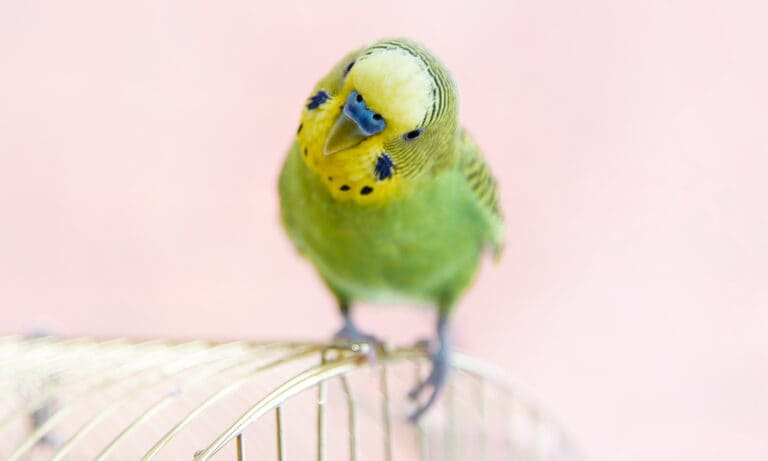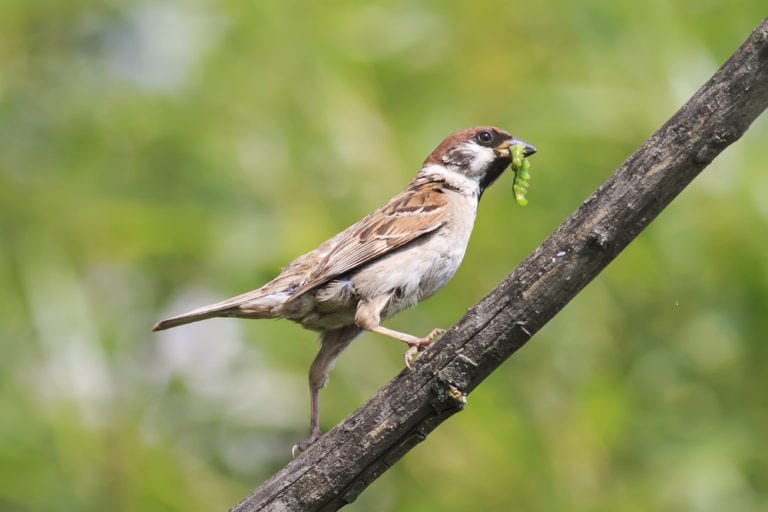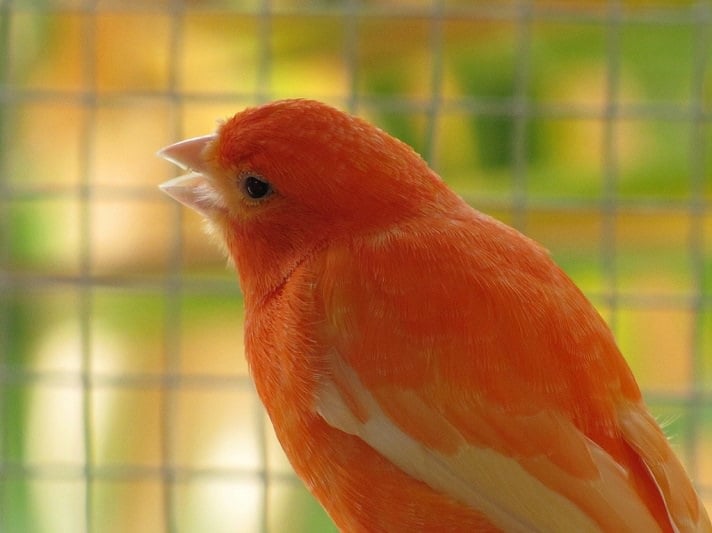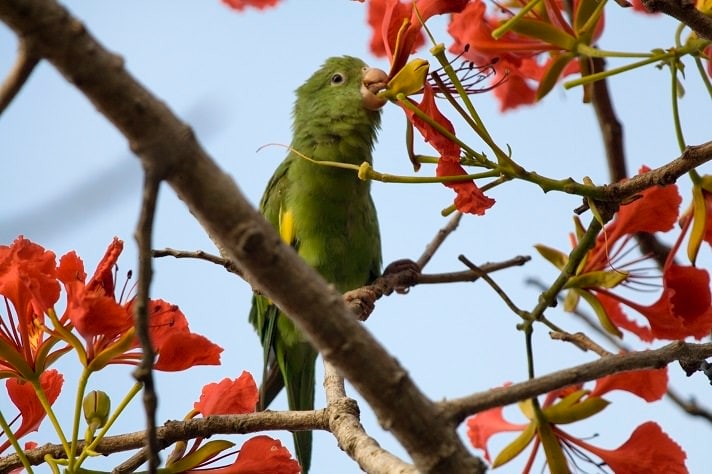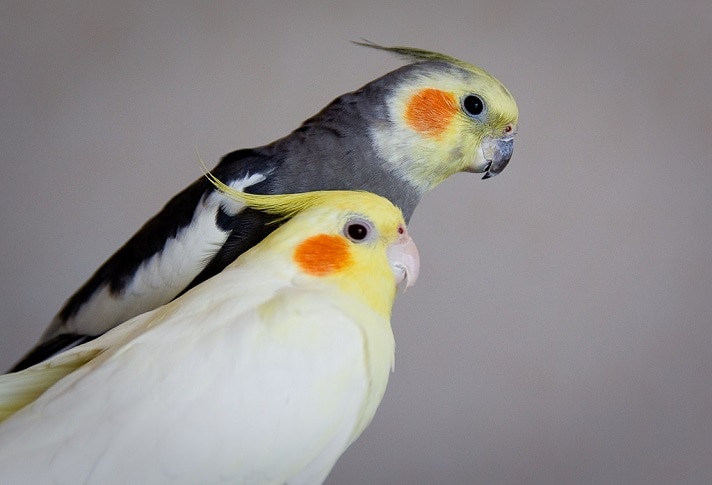Blood. Bleeding. Blood loss. These are words that can inspire fear in pet bird owners, especially those of us who share our homes with some of the smaller parrots and passerines. Perhaps you have heard that the loss of one drop of blood from a small pet bird can be life-threatening. Is that true? Let’s have a look at blood and blood loss to learn more about this mysterious red liquid life-force.
Blood is considered a specialized type of connective tissue and is a most marvelous tissue, indeed! Circulating blood cells are suspended in fluid called plasma, and this combination of cells and liquid performs many vital functions necessary for life.
Red blood cells carry oxygen to the tissues and then take away potentially toxic carbon dioxide, where it is exhaled out of the body. When tissue is damaged and bleeding occurs, little, specialized cells called thrombocytes help the blood to clot so that bleeding ceases. The liquid portion of the blood contains a myriad of substances, including proteins, electrolytes (sodium, potassium, phosphorus, etc.), sugars, lipids (cholesterol, triglycerides), amino acids, hormones and vitamins, and it also carries waste products.
Blood travels within blood vessels that are either characterized as arteries that carry blood away from the heart, or as vessels that transport blood toward the heart, which are called veins.
Blood Tests For Birds
Testing the blood can be helpful for avian veterinarians when we are trying to determine a problem that a pet bird might be having. A complete blood count (CBC) can give us invaluable information, and testing the plasma (or serum) can provide us with information about the kidneys, liver, blood sugar level and many more functions. The difference between plasma and serum is that with serum the clotting factors are removed by allowing the blood to clot first before spinning the sample down to separate the liquid from the cells themselves.
Blood cells are primarily manufactured in the bone marrow; however, various other internal organs, such as the spleen and liver, may also contribute some cells. Also, some lymphocytes are made in the thymus or other similar tissues.
Bird Blood Volume
How much blood is actually circulating around in your pet bird? body? Blood volume varies depending on the bird species. This can range from 5 milliliters (or ccs) per 100 grams of body weight in the ring-necked pheasant to up to 16.3 to 20.3 milliliters per 100 grams of body weight in a racing pigeon. Blood volume averages about 10 percent of a bird’s body weight.
Avian veterinarians can determine how much blood can safely be drawn from a healthy bird by using a simple calculation. In passerines and psittacines, we can safely take 1 percent of the body weight in blood if the bird is healthy. In ill birds, we usually take less than that for blood testing. In some cases, with smaller bird patients, we may even prioritize testing, requesting some tests to be run immediately, and then holding off on ordering and running other tests for another time. Usually, we wait a week, or even two, for a second blood draw to do additional testing based on the bird patient’s status.
Avian veterinarians must have an accurate gram scale to weigh birds in order to not only calculate how much blood can be drawn for testing, but also to be able to precisely dose medications.
As an example, a cockatiel weighing 100 grams can safely have 1.0 ml of whole blood drawn, and that is usually adequate for running a CBC and a chemistry panel. If additional tests need to be run that require blood or plasma, these may need to be performed after the bird has been able to convalesce for a week or so.
Blood-Loss Threshold
What happens when a bird loses blood, either through surgery, trauma, red blood cell rupture, internal bleeding, blood feather damage or a blood draw? If enough blood is lost or removed, it results in anemia, which means that the bird no longer has the normal amount of red blood cells.
Anemia can also occur from viruses, chronic disease or infection, toxins, nutritional deficiencies, organ disease, from red cells being destroyed or from blood cells not being produced. Blood loss can be acute or chronic.
A healthy bird can lose as much as 30 percent of its blood volume with minimal problems. For example, a cockatiel weighing about 100 grams could actually lose three milliliters of blood and still potentially be okay. If blood loss is greater than the bird can tolerate, it will go into shock. Shock is a body’s attempt to survive and is described as a multisystemic response.
When shock occurs there is an increased heart rate to increase the output of blood, the arteries constrict to help maintain an adequate blood pressure and to keep vital tissues supplied with blood, and the spleen and veins constrict to translocate blood to the central arteries. It is very important to recognize that the constriction of the arteries is done to support blood flow to the brain and heart at the expense of the other organs; if this occurs for a long enough period of time, it permanently interferes with oxygenation of the tissues, which results in death.
If blood loss occurs, the body attempts to make new red blood cells and plasma, if it has the necessary nutrients to do so. After blood loss, it is recommended to give a bird fluids (ideally by the intravenous or intraosseous route or by the subcutaneous route), an iron injection and a B-complex vitamin injection. In cases of mild blood loss, oral fluid therapy can help replace the liquid portion of the blood, and an oral iron and B-vitamin supplement can be helpful until the tissues can create more red blood cells to replace those lost. Treatment for shock or severe blood loss should be performed by an experienced avian veterinarian.
Blood Transfusions For Pet Birds
In some cases, it is advisable to perform a blood transfusion if a bird has experienced a dangerous amount of blood loss. There is still much we need to learn about blood transfusions in birds, but if a suitable blood donor is available, it can be done. It is always best to use blood from the same species of bird, if possible.
A study was performed using transfusions from cockatiel to cockatiel, from Amazon parrot to cockatiel and from pigeon to cockatiel. The results indicated that it is best to use the same species for a transfusion if at all possible, as the blood cells will remain in circulation longer than if blood cells from another species of bird are used. It appears that transfusions using non-psittacine species may not be effective for long. Before performing a transfusion, a vet performs a simple test called a cross-match to ascertain if the blood is compatible with the patient.
If a bird experiences blood loss due to trauma, seek help from your avian veterinarian as quickly as possible. Keep your bird warm and quiet. If your bird is bleeding, apply pressure using a sterile gauze square or a clean cloth, and take care to not restrict normal breathing movement of the sternum.
If the beak or a toenail is bleeding, you can use a bar of soap, a piece of spider web or a clotting agent to slow or stop the bleeding. If hypothermia isn’t an issue, a piece of ice applied to the beak or claw will cause blood vessels to constrict, which will also slow or stop bleeding.
Birds can handle blood loss quite well, but that doesn’t mean that we shouldn’t take it seriously. Always have a first aid kit available for your bird, and call your avian veterinarian for instruction on how to proceed.
Birds & Blood Loss: Did You Know?
What may come as a surprise to you is that birds are much better able to tolerate blood loss than mammalian species. But there can be a great variation among avian species in how they respond to blood loss. Also, as a rule, flighted birds tend to tolerate blood loss better than non-flighted birds.
Posted by: Chewy Editorial
Share:

